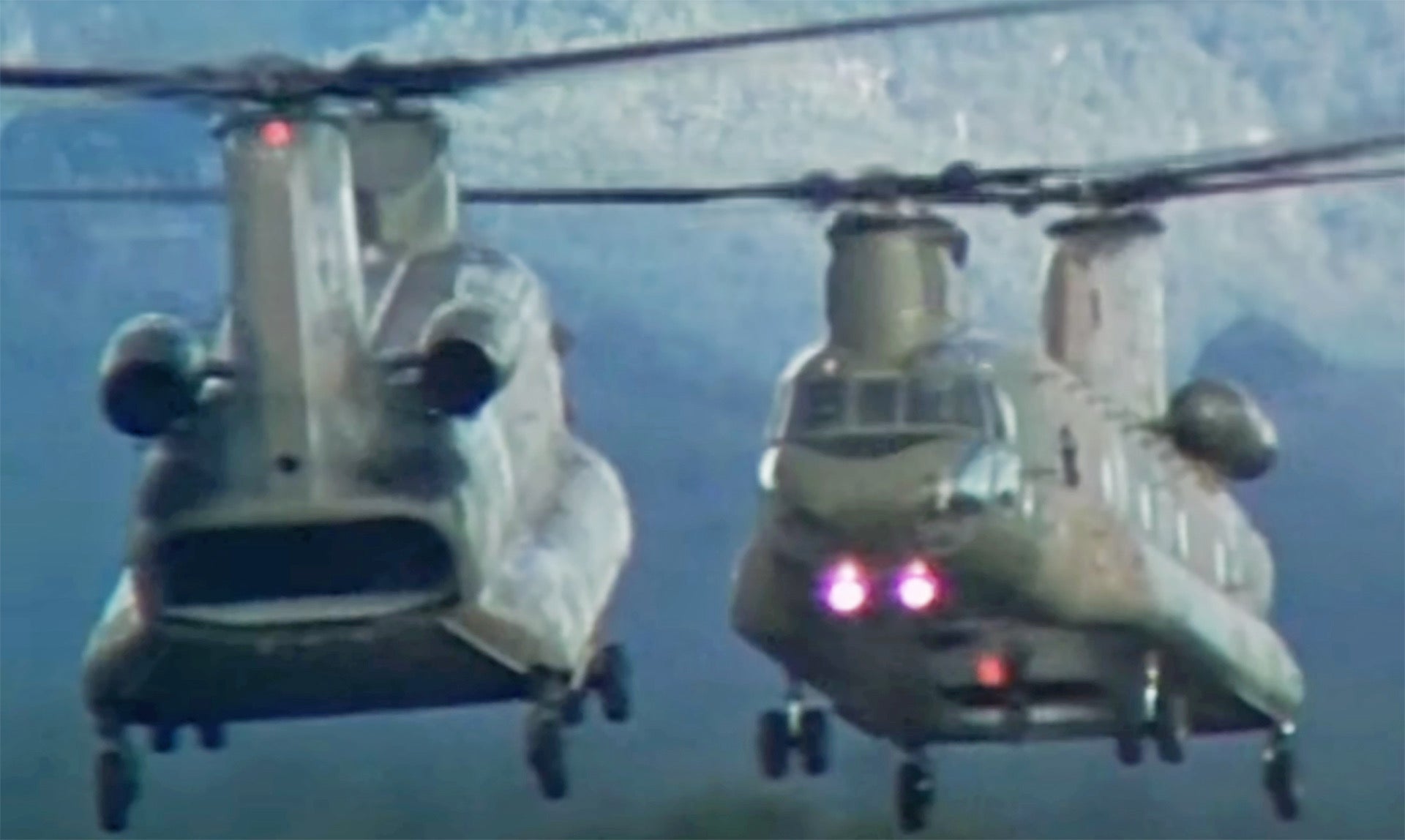Think of memorable air show displays and the chances are you’ll recall some of the spectacular routines flown by thrust-vectoring F-22 Raptor stealth fighters, super-maneuverable Su-35 Flanker fighter jets, or perhaps one of the U.S. Air Force’s iconic heritage formations. This video, however, presents something completely different: a pair of Royal Australian Air Force CH-47 Chinook helicopters performing what can only be described as a formation courtship dance, with a rather literal — and totally unique — conclusion.
The footage was taken during an air show commemorating the Diamond Jubilee, or 60th anniversary, of the Royal Australian Air Force, or RAAF, which took place at RAAF Base Amberley in Queensland, near the country’s eastern coast, on April 5, 1981. Billed as “the most spectacular air show ever staged in Australia,” the event was presented as a 2.5-hour live telecast on the ABC-TV channel.

Perhaps with the thought in the backs of their minds that the hulking Chinook would have to compete with RAAF fast jets — this was the era of the mighty Mirage III and show-stopping F-111 — as well as dedicated display teams, the service’s rotary-wing specialists decided to take a very different approach to their display sequence. As the first export customer for the twin-rotor heavy-lift helicopter, they were clearly keen to make an impression.
Whatever the thinking, the result is simply one of the most unusual air show routines you’re likely to see. The commentary, provided by ABC’s David Flatman, himself a former pilot, and Jeff Watson, helps, too, with the pair clearly in on the joke, and enjoying every moment of it. As the Chinook pair, led by Squadron Leader Chris Beatty, show off the big helicopter’s handling qualities, in a perfectly coordinated flight low over the runway, the mood takes a rapid change of direction.
“I think they almost kissed there, Jeff,” remarks Flatman, before noting that the Chinooks in the two-ship routine were starting to resemble “a pair of brolgas [a type of Australian crane species] in some form of mating ritual.”
That is exactly what the RAAF aviators have planned, of course, and the remainder of the display involves the helicopters approaching each other, turning tightly in formation, breaking and, what the commentators describe as “cuddling.”
Finally, the “female” Chinook returns to the runway, escorted by a “medical vehicle.” You can probably guess what happens next, but it involves a “surgeon,” male personnel dressed in scrubs (and also in drag), plus a comically oversize nursing bottle.

The whole routine is something that, perhaps, could only have emerged in the 1980s.
However, there was a more serious side in the demonstration of the Chinook’s capabilities, which have served the Australian Defense Forces so well. Today, the much more advanced CH-47F is flown by the Australian Army, rather than the RAAF, with 10 examples based at Townsville and used for airmobile, air assault, aeromedical evacuation, and amphibious operations.
“Laughs aside, the technical coordination of that flying is seriously impressive,” Flight Lieutenant Andy Donovan a U.K. Royal Air Force Chinook pilot, who has also performed air displays in the type, told The War Zone, after watching the video. “The timing of their maneuvers is far more difficult than it is made to look when you consider the effects of wind on a large helicopter and the lack of visibility from the cockpit when it comes to tracking the other machine. No doubt a well-planned and rehearsed crew effort.”

One thing that comes across in the video is the fact the Chinook is very fast for its size, in addition to its impressive high-altitude and other performance specifications. This has helped it to perform time and again in demanding operational scenarios and is part of the reason it has been a ubiquitous feature of most American military operations since the Vietnam War, as well as serving with numerous allies.
Furthermore, the particular kinds of close-in maneuvering that Squadron Leader Beatty and his team present can also be seen in real-world scenarios, especially the Chinook’s impressive ability to perform pinnacle landings, something that The War Zone has also explored previously, here and here.

In less than a week, the RAAF will mark its centenary, with a planned flypast over Canberra involving over 60 aircraft. That will, no doubt, be very different from how things were done 40 years ago. But the amorous Chinook pair remind us that the world of military aviation is always ready to spring a surprise of some kind.
Hat-tip to Eamon Hamilton for bringing this video to our attention.
Contact the author: thomas@thedrive.com
